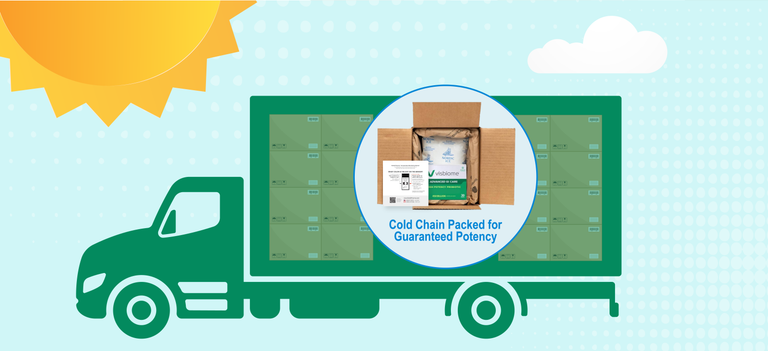In This Article
Share On
By Joanna Foley,
Recently, the low FODMAP diet has been gaining awareness for treating digestive issues. This article will help explain what this diet is, how it works, and its pros and cons. All this information will help you determine if it’s right for you.
Dealing with digestive issues can be frustrating and unpleasant. If you’re someone who frequently deals with negative symptoms in your gut, you’re probably desperate to do whatever you can to find relief. Food is a common trigger for digestive ailments, so it’s a good place to start treating these conditions.
What is a low FODMAP diet, and who is it for?
FODMAP is an acronym that refers to specific types of carbohydrate molecules. It stands for:
Fermentable
Oligosaccharides (found in foods like wheat, rye, garlic, onions, legumes, and some fruits and vegetables)
Disaccharides (primarily found in dairy products like milk, yogurt, and soft cheeses)
Monosaccharides (found in high-fructose fruits and vegetables like mango, pears, apples, dried fruits, artichokes and asparagus, as well as sweeteners like honey and agave)
And
Polyols (found in other fruits and vegetables like nectarines, blackberries, apricots and cauliflower as well as sugar alcohols like sorbitol)
Most people can consume and digest these types of carbohydrates without issue. However, for some individuals, they can cause negative digestive symptoms. Eating FODMAP foods pulls water into your intestines, then they are quickly fermented by bacteria in your gut. These things can lead to poor absorption and digestion for people with sensitive guts. As a result, it can lead to symptoms such as gas, bloating, upset stomach, constipation, and diarrhea.

The low-FODMAP diet was developed to help manage these negative symptoms by restricting the intake of high FODMAP foods for a short period of time. It was specifically designed for people dealing with irritable bowel syndrome (IBS), which is estimated to affect 10-15% of American adults, and it is now a medically recommended treatment. In addition to IBS, having some other conditions may make you more sensitive to FODMAPS and potentially warrant giving this diet a try. These conditions include celiac disease, inflammatory bowel disease including Chrons and Ulcerative Colitis, or being sick with a virus that leads to changes in your gut microbiome.
However, some people should not follow this diet, including those suffering from eating disorders or seeking to lose weight. In addition, children should not follow a low FODMAP diet since there is not enough research to ensure safety and appropriateness for that population.
How do I start?
There are 3 main phases of a low FODMAP diet:
1. Restriction - This is the most difficult stage to follow since it involves avoiding all foods high in FODMAPs. You can find helpful lists of foods to avoid and safe to consume during this phase here. Keep in mind that some foods contain more than one type of FODMAP, and many processed or combination foods may contain high-FODMAP ingredients. So, it is important to read the for complete avoidance.
This stage is recommended to be followed for a minimum of two weeks but may last up to 6 weeks depending on the severity of symptoms.
2. Reintroduction - Once symptoms have resolved or significantly improved, gradual reintroduction of higher FODMAP foods can begin. This should be done one food, and preferably one day at a time to allow for close monitoring of symptoms. It is recommended and helpful to keep a food journal during this phase to determine potential triggers best.
Determining which foods to start with reintroducing can vary and should be decided upon by you and the health professional you are working with. It may be beneficial to reintroduce just one FODMAP group at a time (such as wheat from the oligosaccharides group or dairy products as part of the disaccharides group) and do so in small quantities when starting out.
If no symptoms appear after reintroducing a food, you can begin to increase the quantity and frequency of eating that food. Then, move onto the next food or group of FODMAP’s. However, if you experience negative symptoms, you should take note of it and restrict it while gradually reintroducing other foods. You may be able to try again with previously problematic foods at a later time. Factors such as the amount eaten and the other foods eaten at the same time can influence how your body reacts to high FODMAP food. You may find that you tolerate limited quantities of certain foods while having no necessary restrictions with others.
3. Maintenance - This phase aims to maximize variety in your diet by developing a sustainable eating plan that offers symptom relief. The variety is essential for adequate nutritional intake and a healthy gut microbiome. You may find that some foods may need to be restricted long-term, but many foods should be able to be added back into your regular diet.
Because following a low-FODMAP diet is a complex process that involves strict dedication and time, it is recommended to follow it only under the guidance of a trained healthcare professional like a Registered Dietitian to provide guidance and support.
Pros and Cons of a Low FODMAP Diet
Understanding the possible benefits and downsides of a low FODMAP diet can help you determine whether it’s something you may want to try out.
Pros:
- It can help relieve symptoms of IBS. Some research shows that up to 86% of people with IBS will experience significant relief in symptoms when following this diet. People with related digestive issues may also find symptom relief.
- Potentially reduced risk of other complications that can arise if IBS isn’t dealt with properly, such as hemorrhoids or malnutrition.
- Improved quality of life from not having to deal with negative symptoms
- Possible reduction in the number of missed days of school or work due to symptoms
Cons:
- It's very restrictive. The low FODMAP diet requires the removal of many common foods and is therefore difficult to follow.
- The symptom relief is not guaranteed, and symptoms may return after the completion of all of the phases.
- It limits your ability to eat away from home while in the restriction and reintroduction phase if allowed foods are not available.
- It may cause negative changes to your gut microbiome if followed for an extended period of time. Many high FODMAP foods serve as prebiotics, which supports the growth of beneficial bacteria in the gut. Research shows that following the diet may do more harm than good if followed long-term or for reasons other than to treat IBS or related conditions.
- It isn’t nutritionally adequate since many healthy foods are high in FODMAPS and are restricted during this diet. This further emphasizes the importance of only following this diet short-term.
In addition to considering the pros and cons of a low FODMAP diet, you should always communicate with your doctor before deciding to try out a low FODMAP diet.
In Summary
A low FODMAP diet may be a good temporary treatment for IBS and other related conditions, but it may not be realistic for everyone. There are many alternatives to help treat symptoms of IBS that should be considered before starting a low FODMAP diet. For example, stress management, taking probiotics and making less restrictive changes to your diet.





2 comments
marina Mcgovern
Thank you. I have never heard of this diet. I am going to try it. This may be an issue I am having overall.
Marsha
On Foodmop diet with dietician for 2 months. Thought it was helping. No really positive results yet.